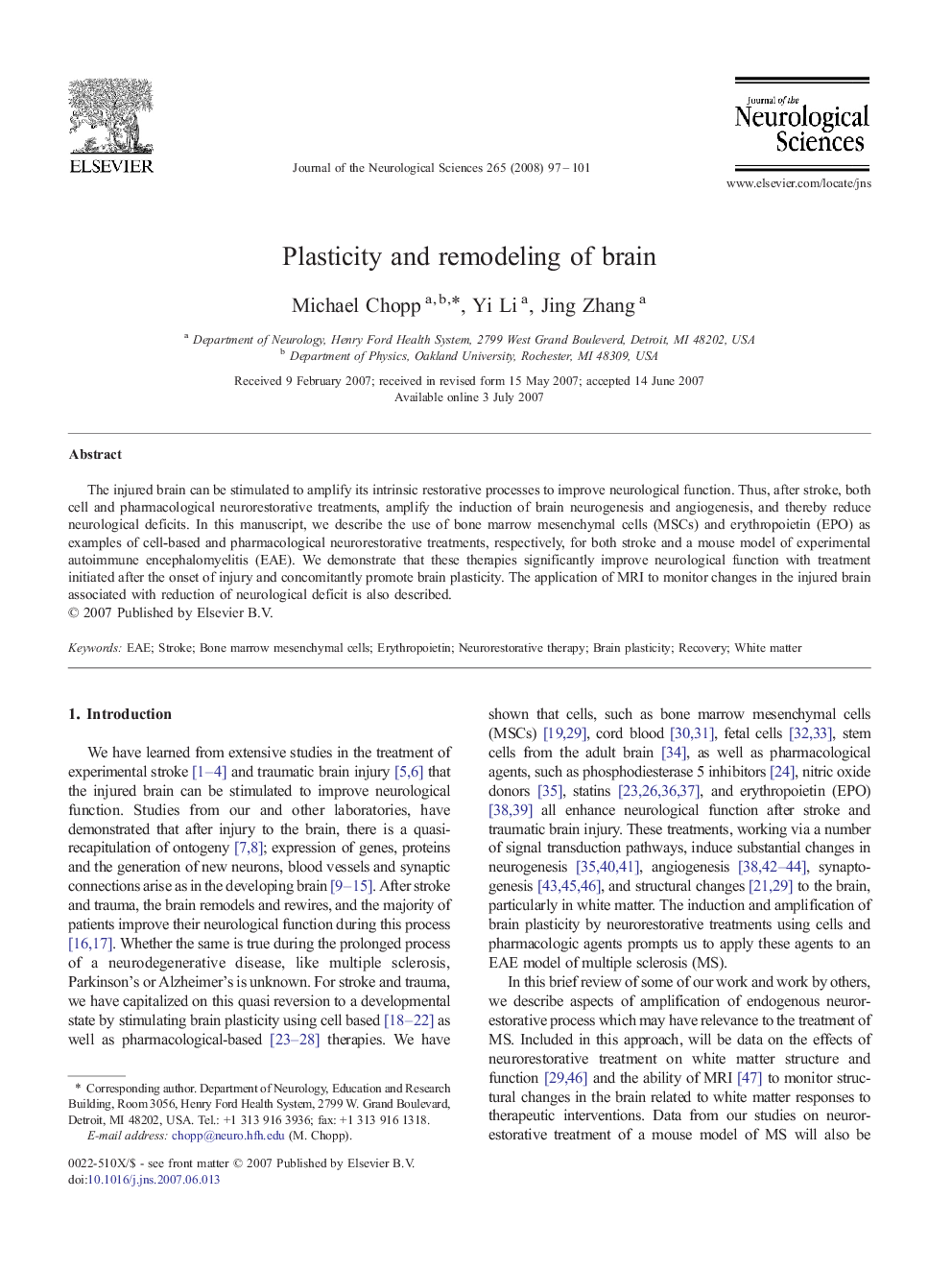| Article ID | Journal | Published Year | Pages | File Type |
|---|---|---|---|---|
| 1916172 | Journal of the Neurological Sciences | 2008 | 5 Pages |
The injured brain can be stimulated to amplify its intrinsic restorative processes to improve neurological function. Thus, after stroke, both cell and pharmacological neurorestorative treatments, amplify the induction of brain neurogenesis and angiogenesis, and thereby reduce neurological deficits. In this manuscript, we describe the use of bone marrow mesenchymal cells (MSCs) and erythropoietin (EPO) as examples of cell-based and pharmacological neurorestorative treatments, respectively, for both stroke and a mouse model of experimental autoimmune encephalomyelitis (EAE). We demonstrate that these therapies significantly improve neurological function with treatment initiated after the onset of injury and concomitantly promote brain plasticity. The application of MRI to monitor changes in the injured brain associated with reduction of neurological deficit is also described.
